The financial industry has come a long way from the shift from paper to on-premises systems, and now it is carefully transitioning to the cloud. The capital markets organizations have realized the potential of multiplatform data, and are adopting various enterprise cloud strategies, seeking centralization and integration.
Improving interconnectivity, e.g., Data Center Interconnect (DCI) technology, and integration capacities is very important when it comes to finance and its complex digital ecosystems of high-performance hybrid multicloud architectures. The data-driven transformation of an organization’s digital assets through the new technological capabilities makes them more resilient and valuable.
Currently, distributed clouds are in the spotlight because they can change the way network architectures are set up to accommodate these advancements and performance requirements.
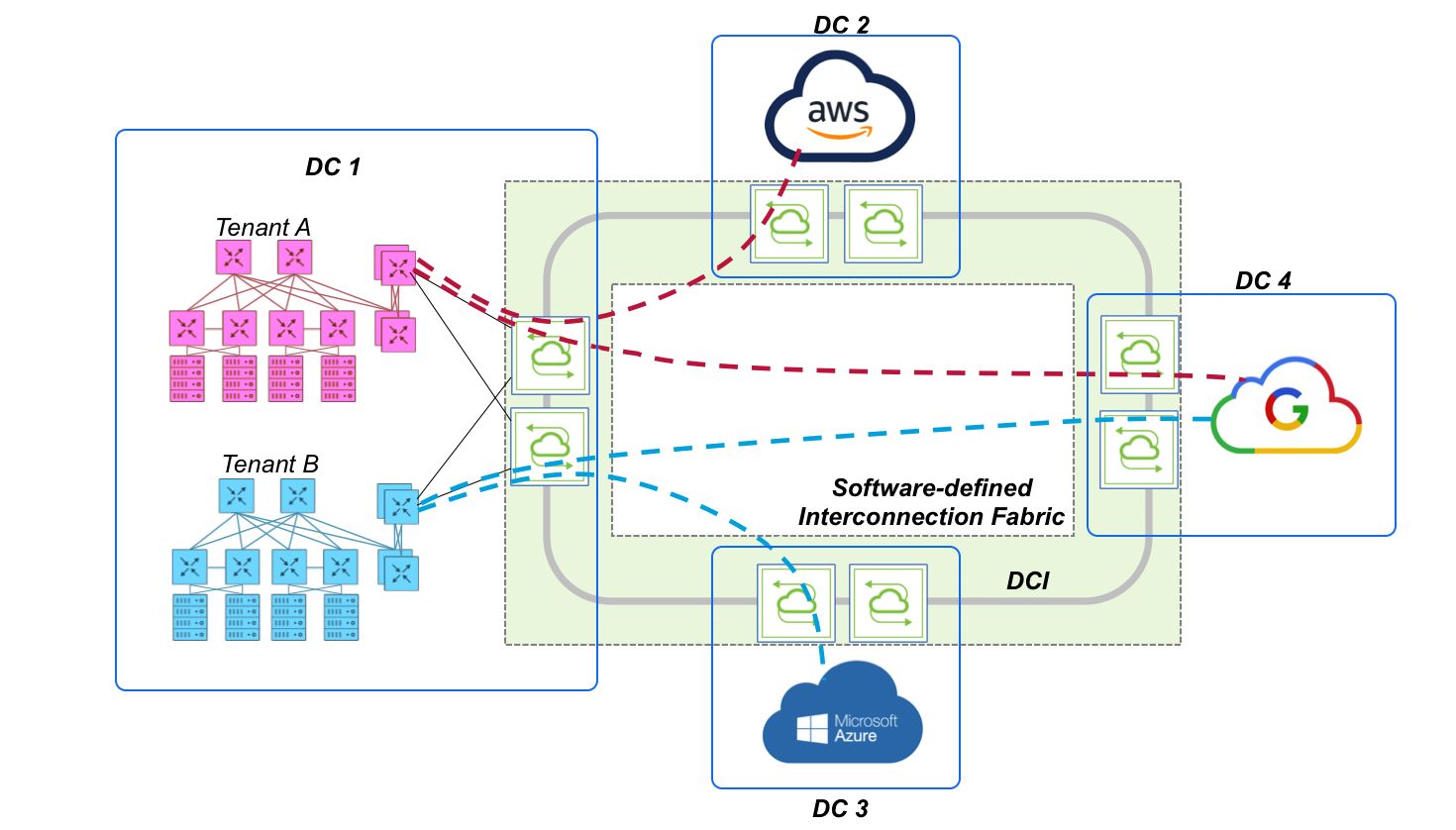
Source: Puribusnetworks
According to the latest Nasdaq Tech Trends report, capital markets firms are rapidly adopting cloud-based technologies such as edge cloud (a distributed cloud model that reduces reliance on centralized processing) and the software-as-a-service model (SaaS). These technologies, combined with emerging ones, e.g., federated learning and homomorphic encryption, could overcome the barriers to sharing and analyzing data without violating privacy regulations.
When transitioning to remote working, many financial organizations chose the cloud to meet their immediate business needs. Few have understood how crucial it is to also have a long-term cloud transformation strategy “on the desk” to maximize their cloud value.
Alexander Sokol, Executive Chairman and Head of Quant Research at CompatibL, suggests that:
“The advent of remote work during the pandemic has significantly reduced management’s resistance to having applications in the cloud rather than in-house. The most important change has been not technological but psychological.”
To stay competitive, these organizations have taken their cue from the tech industry and have already adopted the most advanced cloud technologies. From CompatibL’s experience of working with major financial institutions, the most successful ones have always steadily built, managed, and optimized their cloud strategies and digital transformation plans to make the most of the cloud. When this is done properly, the long-term cost savings and improvements easily justify the setup costs.
So, what is at the core of enterprise cloud transformation strategies in 2022?
At a large organization, digital transformation is all about automating business practices, with a heavy focus on using cloud-based solutions as the target environment. This helps with information transparency and, if done right, should be easily scalable across the organization.
Interconnectivity
Interconnectivity is crucial for today’s financial organizations. It helps align the operations of their front, middle, and back offices. It is no longer enough to rely only on point-to-point connections, especially in the cloud era, when the number of remote connections has surged, and teams require constant, global access to key IT resources to succeed.
At the front office, where microseconds now separate successful transactions from failing investments, having quick and unrestricted access to market data leads to better and more informed decisions. The middle office, providing inputs to the front office on how markets are progressing and who is making noteworthy moves, needs to have accurate real-time data to deliver accurate, useful insights. With good interconnectivity, the back office can better compile information from disparate sources and make it available to the globally distributed organization whenever it is needed, regardless of the locations of these data sources.
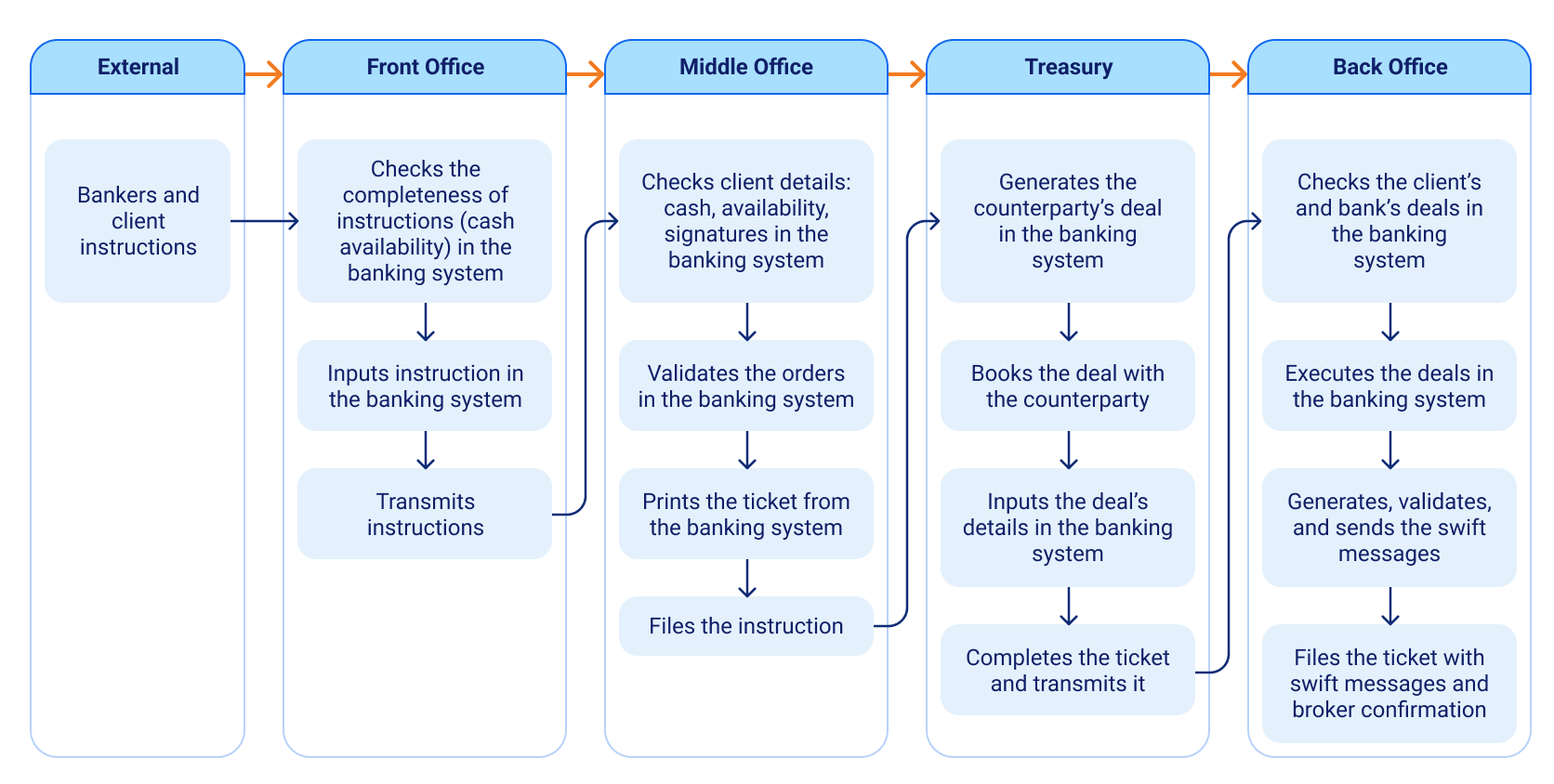
Source: Deloitte
Building capability
Although expanding an IT portfolio brings cost savings, it also raises agility issues, and business agendas need to embrace IT innovations. Increased capability needs to respond to regulatory compliance, data security, and reliable performance of enterprise processes.
Dependable enterprise cloud platforms offer a wide array of services enhanced with fully fledged IT systems that allow businesses to build the necessary capability to compete successfully in the market.
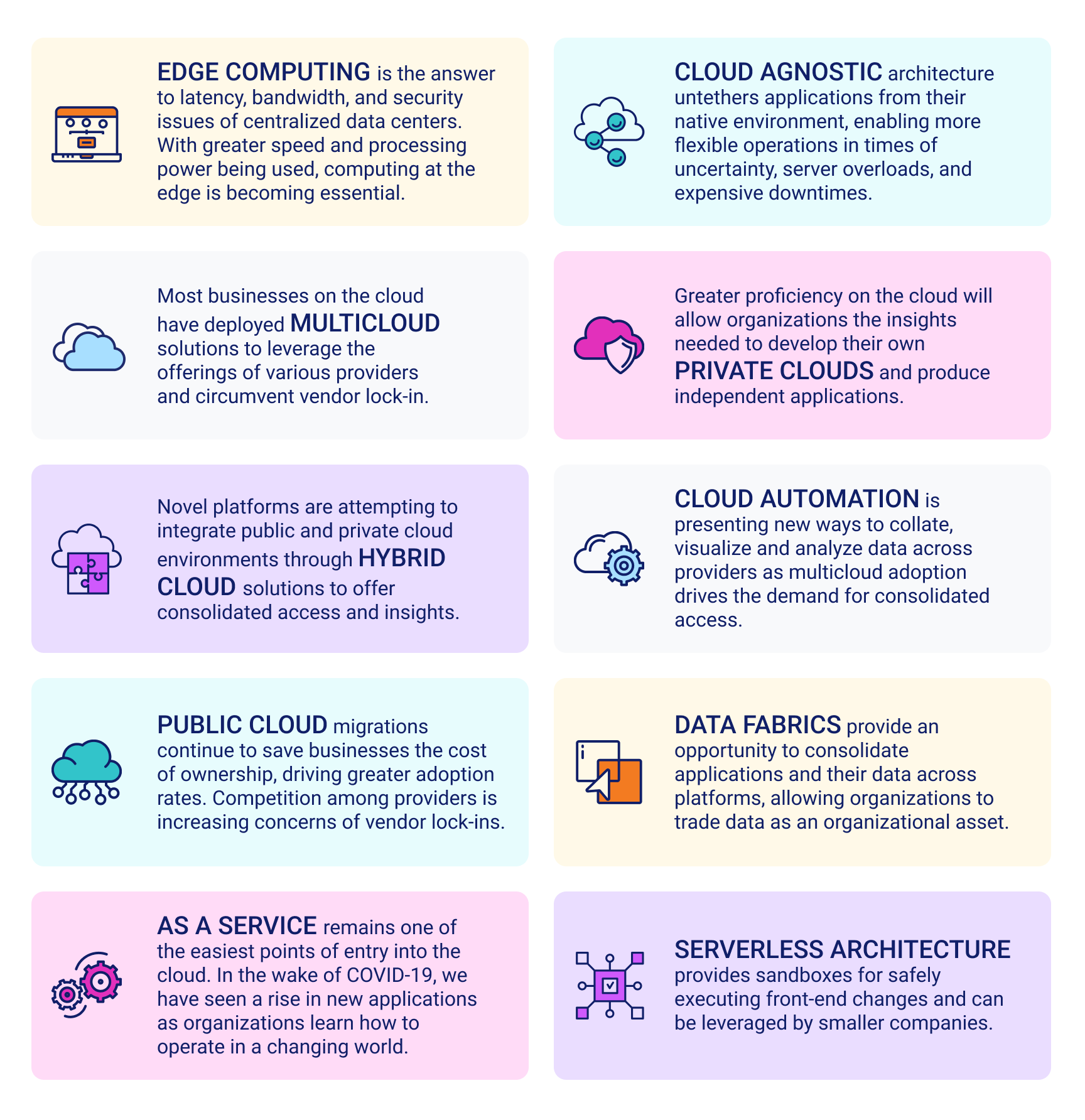
Source: Accenture
Scaling
Due to its high scalability, the cloud now plays an increasingly major role in testing and allocating financial and banking applications.
With scaling in the cloud, firms can continually adapt to make the best use of their time and money. Scalability accommodates greater workloads while preventing disruption or transformation of the existing infrastructure, and allows firms to adjust their processing capabilities to changes in the market.
Financial institutions, such as banks and credit unions, are increasingly making the switch to cloud banking to boost their financial competitiveness. They are embracing the innovation opportunities of the cloud and improving the efficiency of their business processes. As a result, their clients benefit from smoother and faster digital services such as everyday banking, transactions between buyers and sellers, credit card processing, insurance payments, and brokerage services.
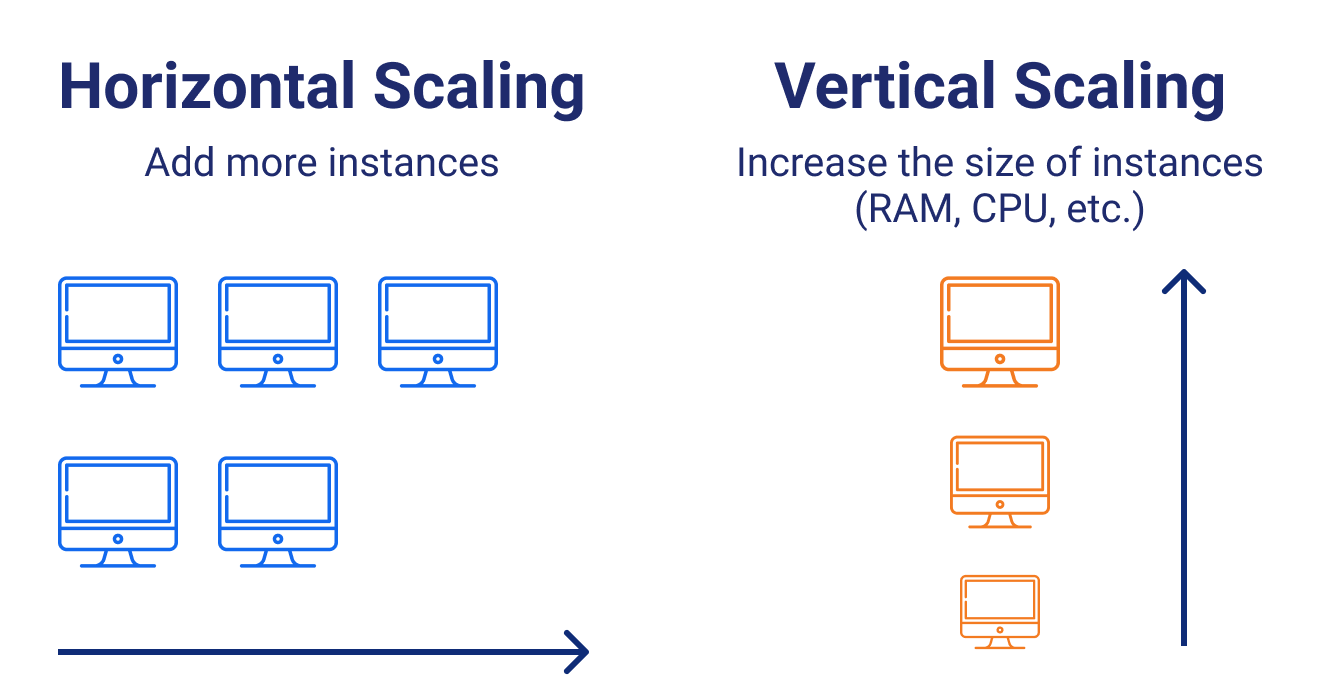
Automation
Automation unlocks enterprise agility: workloads may now be easily moved from one region to another, if required, and multiple identical environments may now be easily created to reduce expensive manual labor.
What is more, enterprise cloud platforms offer automated testing, integration, delivery, and monitoring of applications to ensure their efficiency. This contributes to the reliability, speed, safety, security, and compliance of delivered infrastructures and applications.
| AUTOMATED MULTICLOUD MANAGEMENT | AUTOMATED HYBRID CLOUD INTEGRATION |
|
Multicloud is a cloud approach made up of more than one cloud service, from more than one cloud vendor—public or private. Each cloud provider offers specific tools for operating and managing their own cloud resources. These tools rarely interoperate directly with each other, requiring IT teams to provision, administer, and maintain each cloud differently. Automation can help you manage multicloud environments more consistently. You can create automation assets that codify resources across all of your clouds and offer a single application programming interface (API) for a given operation, regardless of the cloud involved. |
Hybrid cloud is an IT architecture that incorporates some degree of workload portability, orchestration, and management across two or more environments. This variety can make it difficult for IT teams to integrate and support both infrastructures consistently. A flexible automation platform lets you apply the same automation code to existing on-site systems, current cloud resources, and future assets—ensuring consistency and providing a layer of operational integration, simplifying operations across geographies, increasing consistency and scale, and reducing the time it takes to perform tasks. |
Source: RedHat
Multicloud
Public, private, hybrid, or on-premises clouds as well as AWS, Azure, and other leading cloud solutions have made cloud data storage, computation, and security the new normal. A multicloud environment thus offers reliability and redundancy, easier migration from one provider to another (with decreasing dependency on a single vendor), and potential cost savings if the client chooses an alternative vendor with more affordable services.
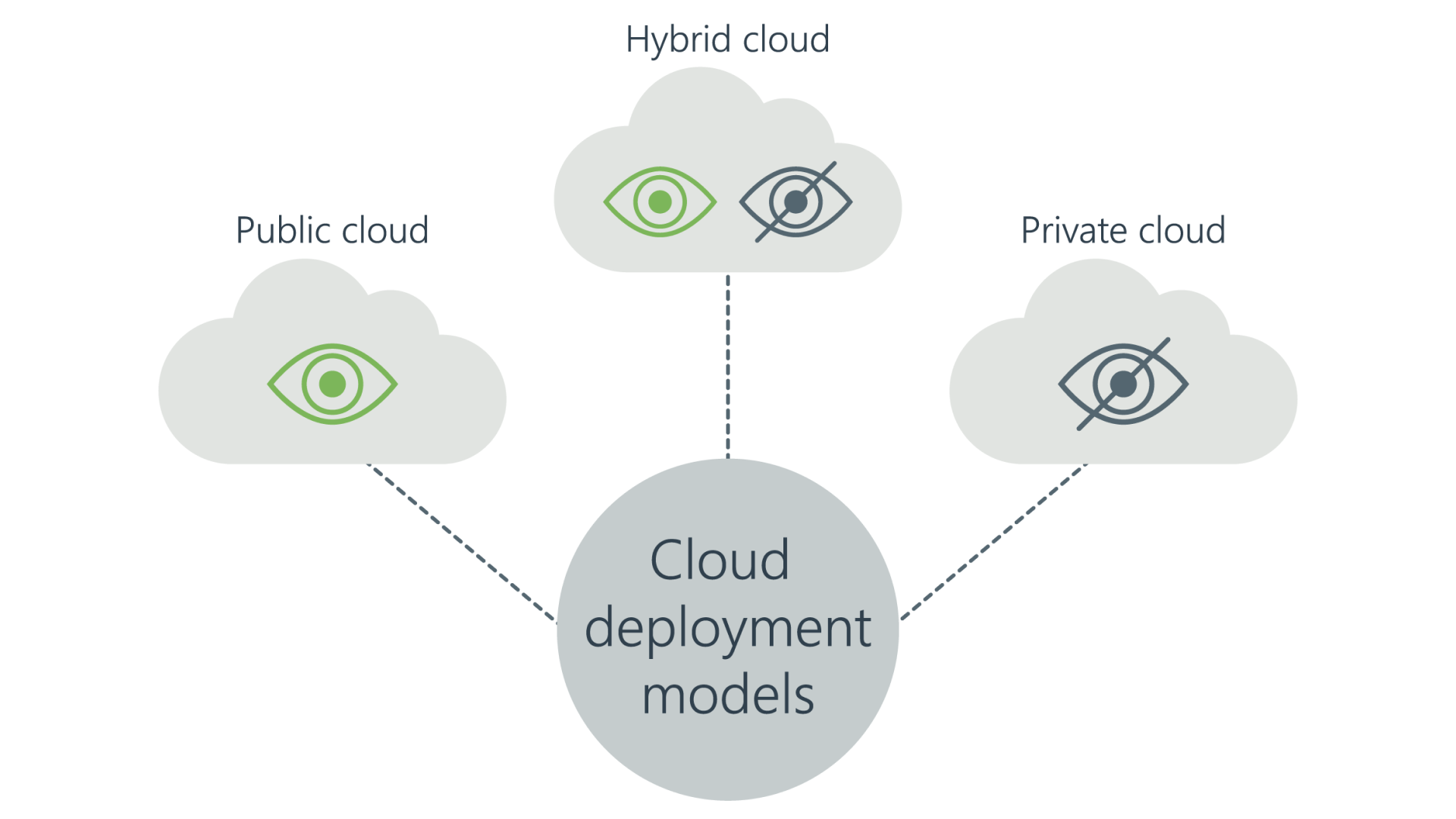
For example, our enterprise cloud platform, CompatibL Risk Cloud, offers the freedom to choose the most appropriate solution from a wide array of cloud services, such as Amazon Web Services, Microsoft Azure, and Kubernetes deployments, fully supported by:
- AWS Lambda
- AWS Fargate
- AWS Step Functions
- Azure Functions
- Docker containers
- Enterprise-level in‑memory caching
- Cloud database solutions
The platform, recognized as Best Cloud Platform by multiple awards since 2020, remains an ideal foundation on which financial institutions and banking firms can establish a flexible and widely available next-generation architecture for their ecosystem, optimize their digital and cloud transformation strategies, manage their cloud solutions, and improve their digital services.
Security and risk management
ISACA has recently issued its white paper on continuous oversight in the cloud, which requires businesses to implement continuous internal monitoring, cloud assurance, and supply chain capabilities, as well as to regularly improve cloud security, privacy, and compliance. Every major change involving cloud transformation entails risks such as hacking, breaches, and concerns with individual privacy.
The Cloud Security Alliance is an excellent source of knowledge, best practice, and research for secure cloud transformation. Enterprise cloud platforms also often provide relevant expertise, and possess proven policies, controls, procedures, and technologies to protect cloud- and multicloud-based systems, data, and infrastructure.
Looking ahead
With price being the only barrier to the many efficient ways to deploy the cloud and its storage capacity, businesses from banking and financial markets are predicted to double down on their use of the cloud, with up to 80% of workloads potentially shifting to the cloud-based platforms in the near future. At CompatibL, we anticipate the demand for cloud services to rise this year, and we have big plans for 2022.
To accommodate demand, we have already grown the company to include more than 300 in-house experts—including quants, software engineers, system architects, and analysts—who support CompatibL Risk Cloud and develop cloud solutions for our clients around the globe. We have also invested in training of our integration and IT specialists to fully support our clients’ digital transformation.
As the financial industry is waking up to the potential of data, especially multiplatform data, and is seeking centralization and integration, the benefits of an effective enterprise cloud strategy are being widely embraced by banking, insurance, and other financial institutions. Now is the perfect time to embrace the new possibilities and help revolutionize the capital market.



